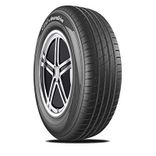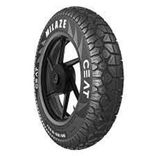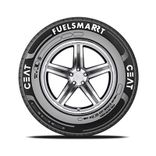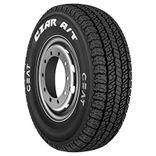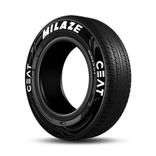Ad
Ad
How to Choose the Right Lubricants for Your Car, Bike, and Scooter
Learn how to choose the right lubricants for your vehicle, whether it’s a car, bike, or scooter. This guide covers essential factors such as engine oil, transmission fluids, and maintenance tips to ensure optimal performance and longevity.
Ad
Ad

Lubricants play a vital role in a vehicle’s health and longevity. When it comes to maintenance, the choice of lubricants is the most common factor that is often overlooked by vehicle owners. Whether you are driving a car, bike, or scooter, choosing the right lubricants helps your machine to run smoothly, improving fuel efficiency, and prolonging its lifespan.
However, choosing the best lubricant for your vehicle is very straightforward, especially the engine oil. Today, we will discuss how to choose the right lubricants for your vehicles including cars, motorcycles, and scooters.
Understanding the Importance of Lubricants
Lubricants are essential to reduce friction between moving parts in a vehicle. It not only provides smooth movement but also helps to regulate heat and prevent rust and corrosion inside the engine and other components. That is why it becomes very important to consider several factors while choosing a perfect lubricant for your vehicle. Otherwise, you may end up spending a lot of money on maintenance and repairs due to engine damage and poor performance.
Common Factors to Consider When Choosing Lubricants
Vehicle Type and Manufacturer Guidelines
The first step is always to check the manufacturer's guidelines for any product you use in your vehicle. Each type of vehicle has different lubrication requirements (especially for engine oil and brake/clutch oil) which are provided by the manufacturer of your vehicle. For instance, cars require different engine/brake/clutch oils than motorcycles or scooters. These details are usually mentioned in the vehicle owner's manual.
For engine oil, depending on the engine design and intended use, the guideline will include the preferred viscosity grade (5W-30, 10W-40) and type (mineral, semi-synthetic or synthetic). In addition to improved engine performance, the majority of modern engines have now switched to fully synthetic engine oils to reduce the frequency of oil changes.
For brake/clutch oil, the cap of the oil container is labeled with the fluid type such as DOT 3 or DOT 4 for different types of vehicles including cars and motorcycles.
Different Driving Conditions
The way you drive your vehicle can influence the type of oil which is best for the engine. When you use to drive your vehicle in cities with hot weather with frequent starts and stops, the engine produces significant heat and stress. This is the reason for engine components' wear and tear, which is why thermally stable synthetic oil suits best for these conditions.
Moreover, oils with high detergent content are recommended for highway use or driving situations requiring greater torque and performance, such as off-road driving. Furthermore, for older vehicles, mineral oil would be more appropriate as these vehicles are not used regularly or on a daily basis.
Climate Conditions
For cold weather, low-viscosity oils, such as 5W30, are perfect since they are thinner and flow freely in a cold engine, which lessens wear at engine ignition. When engine operating temperatures are low, these oils stay thin enough to circulate rapidly.
On the other hand, in hot climatic conditions, oils having higher viscosity levels, such as 10W40, perform better since they retain their fluidity at high temperatures. In such conditions, they provide superior protection and prevent engine wear by ensuring proper flow and circulation to the engine internals. Highly viscous oils are designed to withstand the thermal stress of hot weather, therefore their thickness and poor flow rate at lower temperatures may be problematic to engines running in colder climates.
Vehicle’s Mileage and Age
Because of its superior, long-lasting protection qualities, synthetic oil is frequently advised for modern vehicles. You might want to look into oils with additives to prevent leaks from gaskets and seals and to safeguard aging engine parts in older or high-mileage vehicles.
Choosing Lubricants for Your Car
When selecting lubricants for your car, focus primarily on engine oil and transmission fluid.
Engine Oil
Your car's engine depends mainly on the right oil to run smoothly. Look for oils that meet the manufacturer's standards, which are usually outlined in the owner's manual. Cars with modern engines use synthetic oils which do not require frequent oil replacements.
Transmission Fluids
Transmission fluids for automatic and manual cars are different. Check your car's manual to see what sort of fluid is recommended. This fluid should be changed on a regular basis to ensure smooth gear shifts and to protect the gearbox.
Choosing Lubricants for Your Bike
Motorcycle engines have specific needs compared to car engines due to the nature of their design and riding conditions. When it comes to lubrication for motorcycles, you should primarily focus on lubes such as:
Engine Oil
Similar to cars, motorcycles need the right engine oil for efficient performance. For motorcycles, you’ll often find 10W-40 or 20W-50 oils recommended, depending on the climate and engine type.
Chain Oil
Chain oil keeps the smooth transfer of power from the transmission shaft to the chain sprocket located in the rear wheel’s axis. That is the reason why you should regularly apply chain oils to the motorcycle chain to reduce wear and dust deposits and reduce wear.
Brake Fluid
Most bikes use hydraulic disc brakes as their braking mechanism which requires a specialised type of hydraulic fluid to transmit the pressure from the brake lever to the disc calipers. You always have to refer to the manufacturer's recommendations for these fluids. The details for recommended brake fluid on a motorcycle are often present in the brake fluid box’s cap such as DOT 3, DOT 4, etc.
Fork Oil
Another type of hydraulic fluid used in bikes is fork oil. If you have a bike with suspension forks, the fork oil keeps the suspension functioning optimally, absorbing shocks and providing stability on the road.
Choosing Lubricants for Your Scooter
Scooters also need specific lubricants for their smaller engines and different operating conditions. Such types of engines typically require lighter oils like 10W-30 or 10W-40 depending on the climate.
For lubricating other components such as tyre bearings, you can use a recommended type of grease for smooth performance and longevity.
Maintenance Tips for Lubricants
Regular Oil Checks
Make sure to check the oil level and condition regularly. If the oil appears dark, thick or has an unusual smell, it may be time for an oil change.
Follow the Manufacturer’s Oil Change Intervals
Each vehicle has a specific oil change interval. For cars, it’s generally every 5,000 to 8,000 kilometers, while bikes and scooters may require more frequent changes usually every 3000 kms.
Check for Leaks
Leaks can cause oil loss and lead to inadequate lubrication. Regularly inspect the engine and transmission for signs of oil leaks.
Don’t Mix Oils
Different oils have different properties. Always use the recommended oil for your vehicle and avoid mixing synthetic with conventional oils.
Common Lubricant Mistakes to Avoid
Using the Wrong Oil Type
Avoid using the wrong oil for your specific vehicle, as it can cause poor performance and long-term damage.
Ignoring Oil Change Intervals
Delaying oil changes can lead to increased engine wear, overheating, and reduced performance.
Choosing Low-Quality Oil
Cheap oils might seem cost-effective in the short term, but they often offer less protection and can cause damage to your engine over time.
CarBike360 Says
Choosing the right lubricants for your vehicle is crucial for maintaining its performance, enhancing fuel efficiency, and prolonging its lifespan. Whether you’re driving a car, motorcycle, or scooter, the right lubricant ensures smooth operation by reducing friction, controlling heat, and preventing corrosion. Ultimately, investing in high-quality lubricants and proper maintenance practices will lead to a smoother, more reliable ride, saving you from costly repairs and improving your vehicle’s longevity.
Also Read:How Often Should You Change Your Engine Oil? A Complete DIY Guide
More Articles

Meet the Hero Vida V1: Sleek, Smart, and Sustainable
The Hero Vida V1 electric scooter offers sleek design, innovative technology, and impressive performance. Learn about its features, variants, pricing, and competition in India’s growing electric vehicle market.
20-Feb-2025 12:01 PM
Read Full Article
Meet the Hero Vida V1: Sleek, Smart, and Sustainable
The Hero Vida V1 electric scooter offers sleek design, innovative technology, and impressive performance. Learn about its features, variants, pricing, and competition in India’s growing electric vehicle market.
20-Feb-2025 12:01 PM
Read Full Article
Brake Fluid Types Explained: DOT 3, DOT 4, DOT 5 – Which One to Use?
This article explains the different types of brake fluids (DOT 3, DOT 4, DOT 5, DOT 5.1) and which one to use in your vehicle.
13-Feb-2025 01:12 PM
Read Full Article
Brake Fluid Types Explained: DOT 3, DOT 4, DOT 5 – Which One to Use?
This article explains the different types of brake fluids (DOT 3, DOT 4, DOT 5, DOT 5.1) and which one to use in your vehicle.
13-Feb-2025 01:12 PM
Read Full Article
Do Engine Oil Additives Really Improve Your Vehicle's Performance?
This article provides an in-depth overview of engine oil additives, explaining what they are, how they function, and whether they’re worth using in your vehicle.
12-Feb-2025 11:14 AM
Read Full Article
Do Engine Oil Additives Really Improve Your Vehicle's Performance?
This article provides an in-depth overview of engine oil additives, explaining what they are, how they function, and whether they’re worth using in your vehicle.
12-Feb-2025 11:14 AM
Read Full Article
Impact of Poor Lubrication on Your Vehicle’s Performance and Longevity
Lubrication is key to your vehicle’s performance and longevity. This article covers the effects of poor lubrication, its causes, and tips to prevent it, ensuring your vehicle runs smoothly and lasts longer.
10-Feb-2025 07:32 AM
Read Full Article
Impact of Poor Lubrication on Your Vehicle’s Performance and Longevity
Lubrication is key to your vehicle’s performance and longevity. This article covers the effects of poor lubrication, its causes, and tips to prevent it, ensuring your vehicle runs smoothly and lasts longer.
10-Feb-2025 07:32 AM
Read Full Article
How to Read Engine Oil Labels: Understanding API, ACEA, and SAE Ratings
Learn how to read your vehicle’s engine oil label and make informed decisions to improve engine health and longevity. This guide explains essential information such as the SAE code, API standards, and manufacturer certifications.
07-Feb-2025 08:17 AM
Read Full Article
How to Read Engine Oil Labels: Understanding API, ACEA, and SAE Ratings
Learn how to read your vehicle’s engine oil label and make informed decisions to improve engine health and longevity. This guide explains essential information such as the SAE code, API standards, and manufacturer certifications.
07-Feb-2025 08:17 AM
Read Full Article
Clutch Fluid vs. Brake Fluid: Are They the Same?
Brake and clutch fluids are crucial for the performance and safety of your vehicle. This article explains their functions, maintenance tips, and when to know it's time to inspect or replace these fluids.
05-Feb-2025 12:19 PM
Read Full Article
Clutch Fluid vs. Brake Fluid: Are They the Same?
Brake and clutch fluids are crucial for the performance and safety of your vehicle. This article explains their functions, maintenance tips, and when to know it's time to inspect or replace these fluids.
05-Feb-2025 12:19 PM
Read Full ArticleAd
Ad






